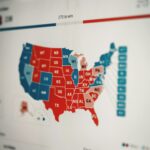Limited Options
During the 2000 presidential race a neighboring farmer down the road from my parents dug out a Perot for President yard sign and staked it at the end of his driveway. Astute readers will remember that Perot did not run for president during the 2000 election — much less the 2004, 2008, 2012 or the 2016 election, yet my parent’s neighbor has continued to brandish his Perot sign each presidential election.
H. Ross Perot died Tuesday, July 9. While many news articles will discuss his lasting impact on American politics and most likely reference his historic 1992 campaign, this is not a post about or even tribute to Ross Perot, but musings apropos the limited choice Americans have in the voter’s booth — which his candidacy pointed out.
Although I’ve never asked and certainly do not know his reasoning, perhaps this neighbor’s intentions had more to do with the lack of presidential choices than a yearning for Ross Perot.
Perot ran one of the most successful US third-party campaigns during his 1992 candidacy, which earned nearly 19 percent of the popular vote. Only Theodore Roosevelt, running with the Bull Moose party 80 years earlier, earned more shares of the popular vote as a third-party candidate (Roosevelt finished second in that 1912 presidential election). In fact, only one non-party-affiliated-candidate has ever won the highest office in US history, George Washington. While most of the discussion surrounding third-party candidacies entails the danger of it taking votes away from either the Democrat or Republican candidate, this truth simply highlights our self-imposed two-option limitation.
Our founding fathers had much to say on political parties — factions as they were then referred to — and much of it was unfavorable. Alexander Hamilton described political parties as “the most fatal disease” of popular governments, while James Madison wrote that a “well-constructed Union” should “break and control the violence of faction(s).” John Adams dreaded nothing more than “a division of the republic into two great parties, each arranged under its leader, and concerning measures in opposition to each other.” Even some of today’s politicians are echoing these concerns. Just last week Michigan Representative Justin Amash, announcing in a Washington Post op-ed that he was leaving the Republican party, stated that “the two-party system has evolved into an existential threat to American principles and institutions.”
More and more Americans appear to be displeased with our current two-party system, evident in a 2018 Gallop poll, which found 57 percent of Americans believe there is a need for a third, major political party. For millennials, the desire is even greater. A 2017 NBC News/GenForward poll found that 71 percent of millennials want a third-party option. Whether this will translate into a viable third choice on the ballot seems currently unlikely. In fact, there are only four existing federal office holders (of whom Rep. Amash is now one) who belong to a “third-party” — however, each of these individuals is listed as an ‘independent,’ which is undeniably more descriptive of a voter’s identification than a political party.
There are valid arguments to be made about why third parties have not and are perhaps unlikely to succeed in securing the presidency, from the US electoral structure to our primary and election cycle timeframe, but few would agree that our current two-party system seems reflective of what the founding fathers had in mind. All this to say, the man who came the closest in recent history to taking the White House as a third-party candidate has passed away, and I just got to wondering if the farmer down the road from my parents will be digging that sign out again in 2020.




